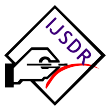Imp Links for Author
Imp Links for Reviewer
Research Area
Subscribe IJSDR
Visitor Counter
Copyright Infringement Claims
Indexing Partner
|
Published Paper Details
|
|
| Paper Title: | GEOHAZARDS SUPRISES: A COMPARATIVE LOOK AT GALE AND OGIRI FIELDS IN THE NIGERDELTA REGION |
| Authors Name: | UMUNNA, O. , AMAKIRI, A. R.C. , TAMUNOBERETON-ARI, I , COOKEY, I. C. |
| Unique Id: | IJSDR2311068 |
| Published In: | Volume 8 Issue 11, November-2023 |
| Abstract: | An attempt is made in this study towards maximising offset wells information in unravelling onshore geohazards indicators in the Gale field. The Gale field is located about 100km north-west of Port Harcourt, Nigeria. The field consists of a highly faulted and elongated rollover anticline, bounded to the north by a regional growth fault. The data used for this study integrates the quadrature and reflectivity amplitude attributes from seismic data, with offset well data. The conventional reflectivity seismic data was 90° phase rotated to derive the quadrature volume. The quadrature seismic was considered a more appropriate reflectivity seismic attribute for use in shallow geohazard analysis as it is known for its characteristic preservation of high frequency spectrum inherent in the data. Geohazards can be defined as "events caused by geological conditions or processes which represent serious threats to human lives, properties, natural and built-up environment" (Solheim et al., 2005). Geohazards exist both onshore and offshore. Onshore, the most common are volcanic eruptions, earthquakes, landslides and debris flows, floods and snow avalanches. Offshore, slope instability and earthquakes are the main threats because of their potential for damaging seafloor installations, and for generating devastating tsunamis, such as the 1998 Papua New Guinea event responsible for more than 2000 deaths, and the past Storegga Slide tsunami (Løvholt, F et al.2008). Features like shallow gas, gas hydrates and mud diapirism also represent geohazards in both onshore and offshore regions. This study highlights an approach in evaluating geohazards in the Gale field through the integration of seismic and well-log data. A comparative Geohazards assessment was carried out for the planned Ogiri-1 well adjacent to the Gale field. Quadrature data was analysed for the presence of Shallow Gas bodies. Also, semblance analysis was carried out to check for potential hydrocarbon migration pathways (in the upward direction). Offset analysis was also done for neighbouring wells (Ogiri-04, 06, 11, 14 and 15) within the field. A well summary was generated for the planned well trajectory detailing the outcome of the geohazard assessment for each interval along the planned well. Field data reconnaissance reveal the field consists of a highly faulted and elongated rollover anticline, bounded to the north by a regional growth fault. The data used is the integration of quadrature and reflectivity amplitude attributes from seismic data, with offset well data. The conventional reflectivity seismic data was 90° phase rotated to derive the quadrature volume. The quadrature seismic was considered a more appropriate reflectivity seismic attribute for use in shallow geohazard analysis as it is known for its characteristic preservation of high frequency spectrum inherent in the data. The results from a geohazards analysis over the Gale field indicate the presence of possible shallow gas within the area of interest and particularly along the shallow section of planned well trajectory. This is further supported by the presence of faults within the vicinity of gas bearing reservoirs at deeper level and a potential for these faults extending to the shallower interval. These faults are likely to serve as migration pathways for gas to seep to the shallower section, hence forming a potential geohazard. In addition, some of the offset wells targeting deeper gas reservoirs penetrated pockets of gas at the shallower interval that stratigraphically correlates with the shallow section that would be penetrated by the planned wells. The results of this work were used to move the proposed drilling location of the Gale planned wells to a nearby area free of shallow gas signatures. Observations from quadrature 3D seismic data and semblance data show that there is no migration path for hydrocarbon from deep to shallow intervals. There were no observed amplitude bodies around the planned well trajectories. Offset well analysis in the field revealed issues ranging from Losses, stuck pipe, overpull and gas cut as gathered from the daily drilling reports. Review of field geotechnical report did not reveal any Geohazards issues. Based on the Geohazards assessment carried out for this well; the chance occurrence of encountering shallow gas for all the units as shown in the well summary is rated low. However, the Top-hole drilling still encountered high background gas revealing that subsurface surprises could still occur despite good well control. |
| Keywords: | Geohazards, amplitudes, Background gas, faults, Gale, Ogiri, etc. |
| Cite Article: | "GEOHAZARDS SUPRISES: A COMPARATIVE LOOK AT GALE AND OGIRI FIELDS IN THE NIGERDELTA REGION", International Journal of Science & Engineering Development Research (www.ijsdr.org), ISSN:2455-2631, Vol.8, Issue 11, page no.460 - 468, November-2023, Available :http://www.ijsdr.org/papers/IJSDR2311068.pdf |
| Downloads: | 000338719 |
| Publication Details: | Published Paper ID: IJSDR2311068 Registration ID:208899 Published In: Volume 8 Issue 11, November-2023 DOI (Digital Object Identifier): Page No: 460 - 468 Publisher: IJSDR | www.ijsdr.org ISSN Number: 2455-2631 |
|
Click Here to Download This Article |
|
| Article Preview | |
|
|
|
Major Indexing from www.ijsdr.org
| Google Scholar | ResearcherID Thomson Reuters | Mendeley : reference manager | Academia.edu |
| arXiv.org : cornell university library | Research Gate | CiteSeerX | DOAJ : Directory of Open Access Journals |
| DRJI | Index Copernicus International | Scribd | DocStoc |
Track Paper
Important Links
Conference Proposal
ISSN
 |
 |
DOI (A digital object identifier)
  Providing A digital object identifier by DOI How to GET DOI and Hard Copy Related |
Open Access License Policy
Social Media
Indexing Partner |
|||
| Copyright © 2024 - All Rights Reserved - IJSDR | |||






Facebook Twitter Instagram LinkedIn